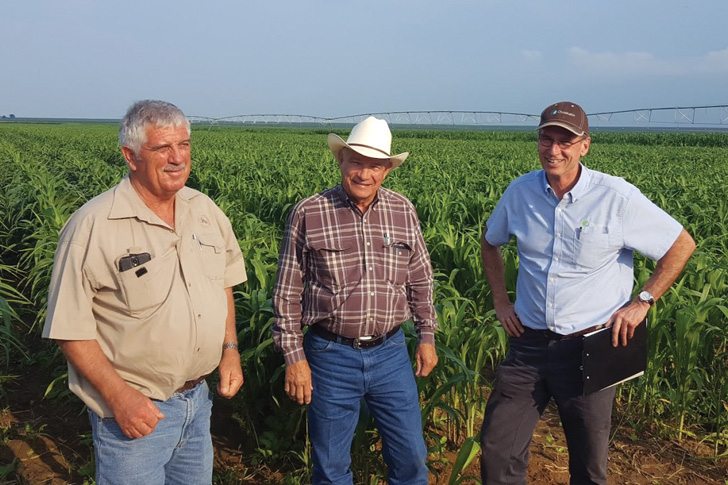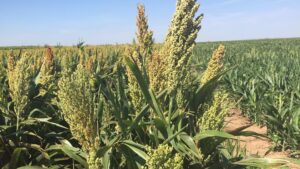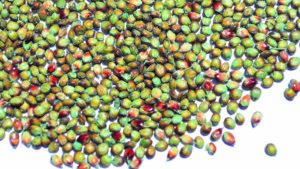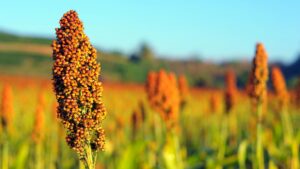Working together toward a common goal allows companies and organizations to share technical expertise and resources, and ultimately, reach that goal faster. But these partnerships and alliances aren’t without their challenges. Experts from around the world spotlight tips for a successful collaboration.
There are many paths to success. For some, an important step in the journey is finding the right partner — even if they’re half a world away.
One success story involves two companies in the United States and South Africa. Chicago-based Chromatin and Zaad Holdings of Cape Town have forged a long-term alliance to supply high-yielding sorghum seed to African farmers. Another example is the partnership struck by CropLife Latin America and the U.S. Agency for International Development (USAID) to educate Honduran farmers on good agricultural practices and how to use pesticides safely and responsibly.
We asked four players involved in these successful collaborations for their thoughts on why strategic alliances and partnerships such as these are important in the seed industry, and what makes them work. They are:
• Daphne Preuss, CEO of Chromatin,
• Antonie Jacobs, CEO of Zaad Holdings,
• Gabriela Briceño, stewardship manager for CropLife Latin America,
• Andy Medlicott, director of USAID-ACCESO and ACCESS to Markets projects (LAC director, Fintrac, Inc).
Sorghum Seed Alliance
Chromatin owns and develops grain and forage sorghum varieties, including high-yielding hybrids adapted to growing conditions throughout Africa, while Zaad is a vertically-integrated agriculture company that distributes seed to African growers. Under their alliance announced in March of 2016, Chromatin is developing and providing seed stocks for grain and forage sorghum that’s being produced locally by Zaad’s network of growers in Africa.
Preuss says her company formed the alliance with Zaad as way to bring Chromatin’s high-quality sorghum seed products to African growers at a competitive price.
“We liked the reputation of the Zaad group and we knew we could work with them,” she says.
Jacobs feels it’s important for African companies to team up with good research and development partners worldwide since many lack the expertise and funding to set up big programs. In this way, the alliance with Chromatin is an excellent fit, he says.
“We would not choose someone who doesn’t have what we think is the best product,” Jacobs says. “Chromatin is a world leader, so we believe we have backed a company that has the best breeding program for African conditions.”
Chromatin has sold seed to Zaad in the past, and the two companies have known each other for years. Jacobs and Preuss agree this familiarity was an important factor behind the agreement. Preuss says Chromatin typically starts slowly when entering into alliances.
“I think in a lot of cases, our smaller alliances sometimes start as a research collaboration,” she says. “It’s a way we can work together to use some technology or test a process. The projects are smaller, they’re really defined. Through that you can often get to know the other side, and then sometimes that blossoms into something bigger.”
Preuss is a firm believer that for companies and organizations in the seed sector, forming strategic alliances and partnerships can be critical for growth.
“It’s one of the most important things you can do, even though it might seem daunting at times or hard work,” she says. “It’s really the only way that companies can grow quickly in the current industry. It’s a really complicated industry, and there’s no way any one smaller-sized company can touch all facets.
“The multinationals can afford to do everything on their own sometimes but even then, you see them partnering. It’s a way we can leverage business that already exists and enter new space without the massive costs associated with doing it ourselves.”
Preuss says her company has started working on similar seed distribution arrangements in Europe, Asia, South America and Australia. “In all of these cases, we’ve found if you can get a local team on the ground that really knows the region, it massively accelerates things,” she says. “Ag is a business built on relationships. These relationships take some time to build, and we love to work with people who have had good relationships in the region.”
Honduran Partnership
Since 2013, CropLife Latin America has partnered with the U.S. Agency for International Development (USAID) to work with Honduras farmers to prevent and mitigate ongoing issues with pest and disease outbreaks in their crops. It’s done through two programs: USAID-ACCESO, which ran until 2015, and its successor ACCESS to Markets (MERCADOS).
In Honduras, where 60 percent of the population lives below the poverty line, growing a healthy crop can mean the difference between prosperity and poverty for a small-scale farmer. The CropLife partnership is part of the mission of USAID-ACCESO and ACCESS to Markets to tackle widespread poverty and boost farmers’ incomes in the country.
Under the programs, the national member of CropLife Latin America called AHSAFE-Honduras has used specialists to train field technicians with USAID-ACCESO and ACCESS to Markets on correct handling and application procedures for pesticides as well as how to dispose of pesticide containers properly.
These field technicians in turn have passed on their knowledge to thousands of Honduran farmers, benefitting the lives of tens of thousands in Central America’s second poorest nation.
Briceño and Medlicott agree that the work in Honduras can be viewed as a powerful example of how public-private partnerships and good agricultural practices can address hunger and poverty around the world.
“The days of doing things on your own are over,” says Briceño. “We know we can’t reach all of the millions of farmers in Latin America by ourselves. Therefore, we have an ally who can give us a hand and will say, ‘You know what? We can’t get all of them but let’s get as many as possible.’ That is the beauty of this.”
Medlicott agrees. “The biggest lesson we’ve learned is that when we’re working successfully in association with partners, you can get better results and you get them faster.”
“The main thing we look for is to make sure that when you do these alliances, that jointly you’re adding value, so that one plus one equals more than two. By doing things together, you’re able to add more value than you would be if doing the project on your own. That’s what we normally try to do,” Medlicott says.
“We try to build alliances where the two organizations can complement each other technically and financially, and are also able to get to a larger number of beneficiaries. A win-win for everybody, that’s what we look for.”
Keys to Success
When it comes to what makes a successful collaboration work, Jacobs lists honesty and integrity as important ingredients, while Medlicott asserts commitment is key. “Once you agree to do something, you have to have the commitment to follow it through,” he says.
Briceño feels agreements should always start with clearly established objectives. “The first thing you need to do is be 100 percent sure that you have identified a priority,” she says.
Medlicott also believes it’s essential to spell things out at the onset. “It is important at the beginning to make sure that everything is clear in terms of timelines and who is doing what, when they’re going to do it and how they’re going to do it. These are basic things but they need to be established out front,” he says.
“It all boils down to a good business plan,” says Jacobs. “It’s important to agree on things contractually beforehand, walk through everything, make sure everybody understands what the purpose is. All the funding needs to be in place, and all the partners need to understand the funding exercise. You’ve got to start with a proper plan.”
Preuss agrees. “You must have the discipline to write it down; that’s really important,” she says, “When you write that down, it’s very clearly stated what the obligations are for each side.”
According to Preuss, financial planning should be included in this process. “If you run into challenges financially and you haven’t gone through this, that’s usually where conflict creeps in,” she says. “Like a lot of relationships, if the financial issues have been solved ahead of time, it’s going to work.”
Preuss also feels there’s value in revisiting plans from time to time. “It’s really important periodically to read the original plan and ask if it has evolved, has it changed; if it has changed, make sure that everybody is on the same page as to where it’s going,” she says. “You’ve got to keep it kind of evergreen, is what I’m saying. It’s good once in a while to sit down and ask ‘OK, are we still tracking?'”
Preuss believes alignment on mission and vision is vital “so you are both working toward goals that are mutually beneficial,” and she also lists openness and communication as important ingredients in a successful collaboration.
“With agriculture, there’s always some level of unpredictability. Things will happen, and you can’t prepare for every contingency,” Preuss says, “If you have open communication, then you can figure how to solve challenges when they arise.”













